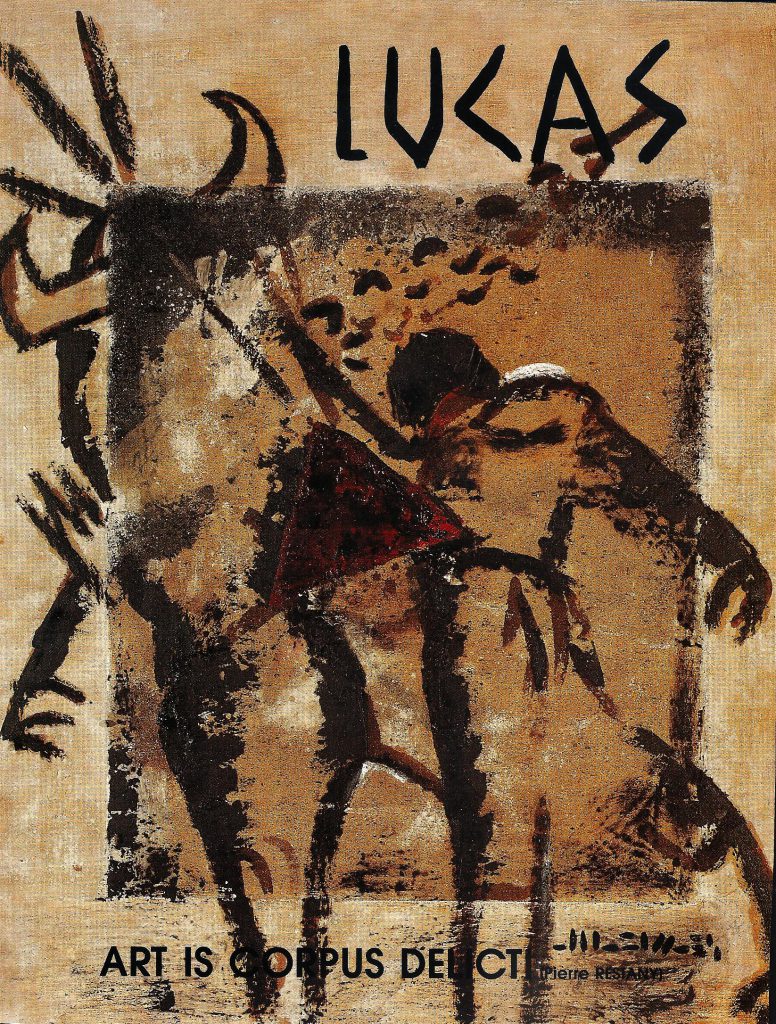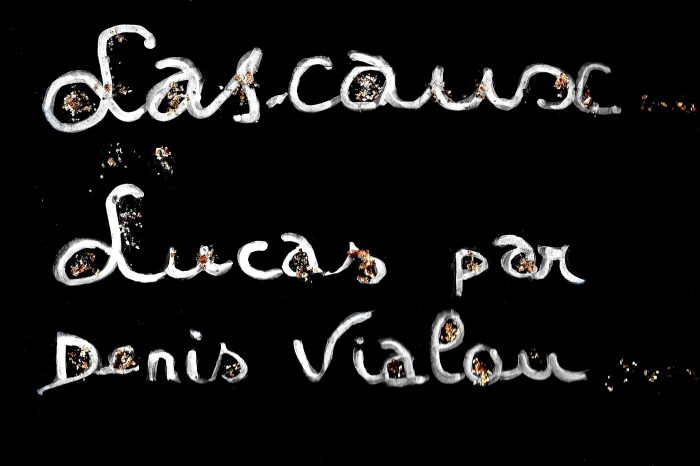
Lascaux Lucas by Denis Vialou
director of the prehistory laboratory of the National Natural History Museum in Paris.
Auteur de l’ouvrage de référence sur les peintures rupestres dans le monde
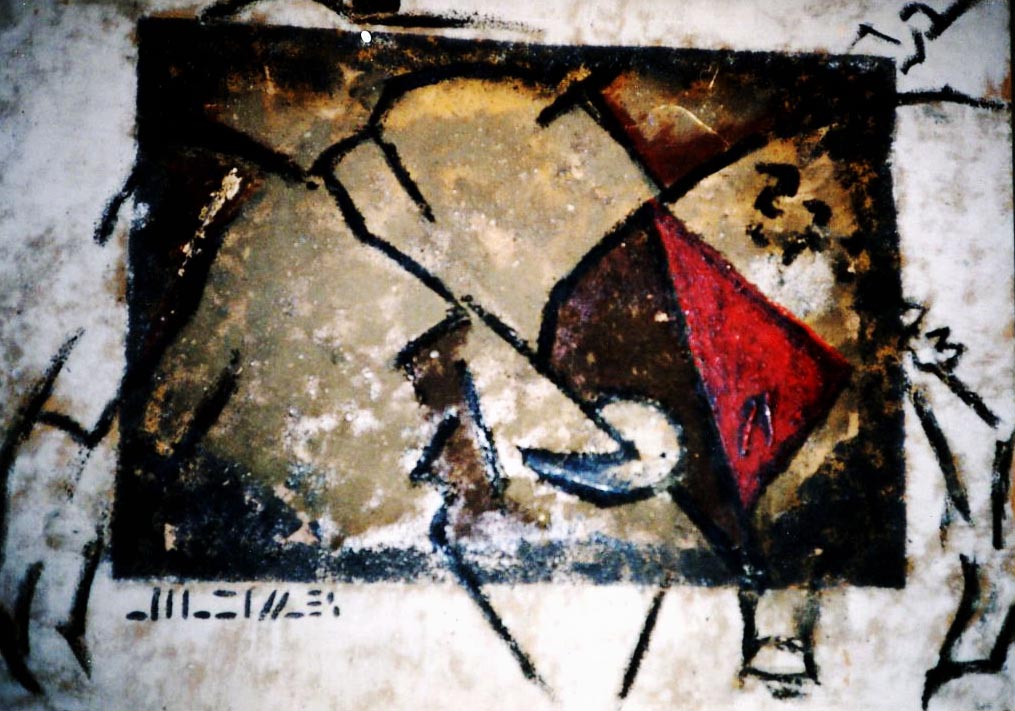
“In the dim light, you are seized by an inexplicable feeling, as if humans from a time long gone were calling you. This impenetrable cave, which resonates with the silent procession of life, is a sanctuary for the souls of these far distant earth dwellers. “
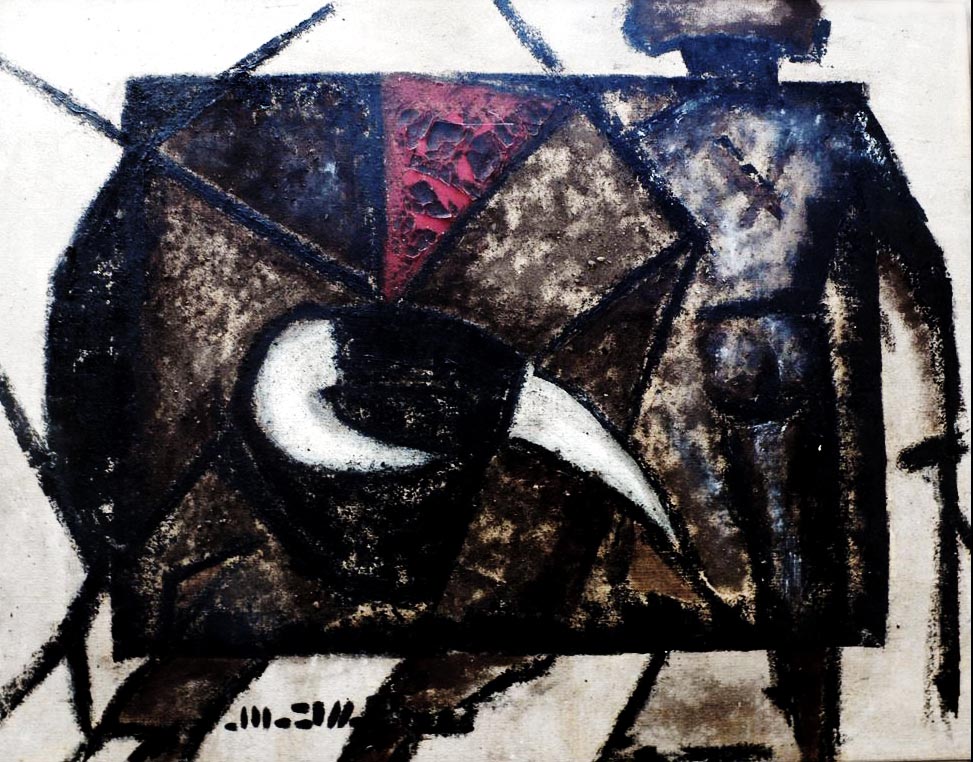
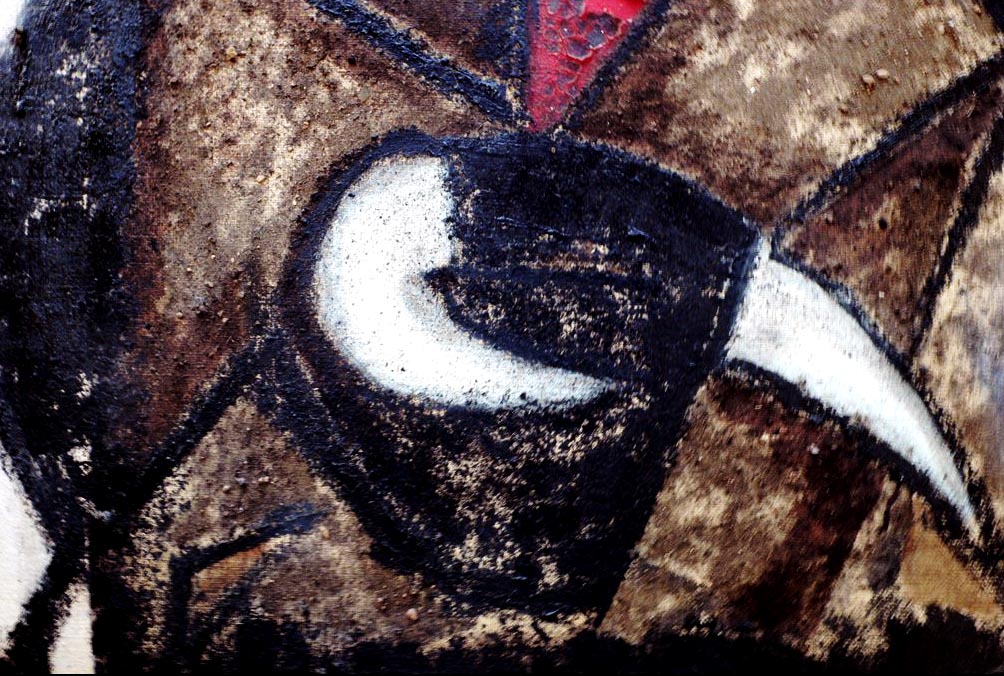
This profound communion between the artist, Lucas, and the bullfighters echoes like an ancient response to these men of Lascaux who, several thousand years ago, left us a secret message etched onto the rock itself. The men who painted some of the oldest animal frescoes at Lascaux using the same geometrical shapes wrote the story of their lives in a secret language.
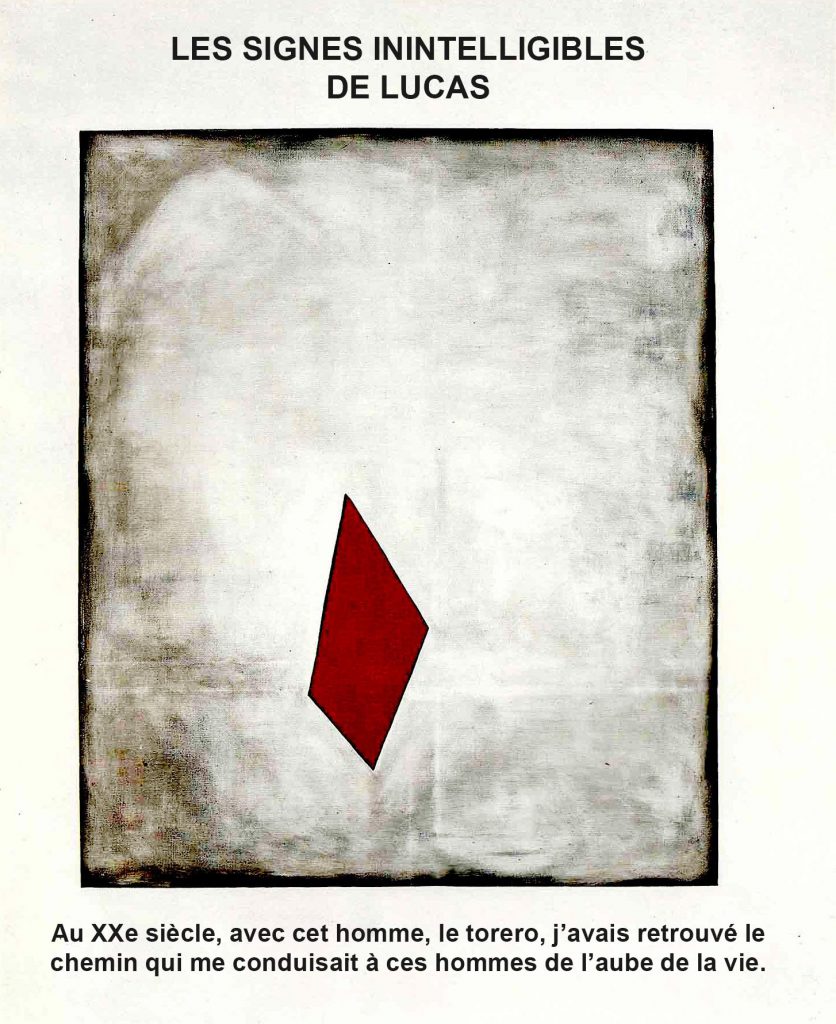
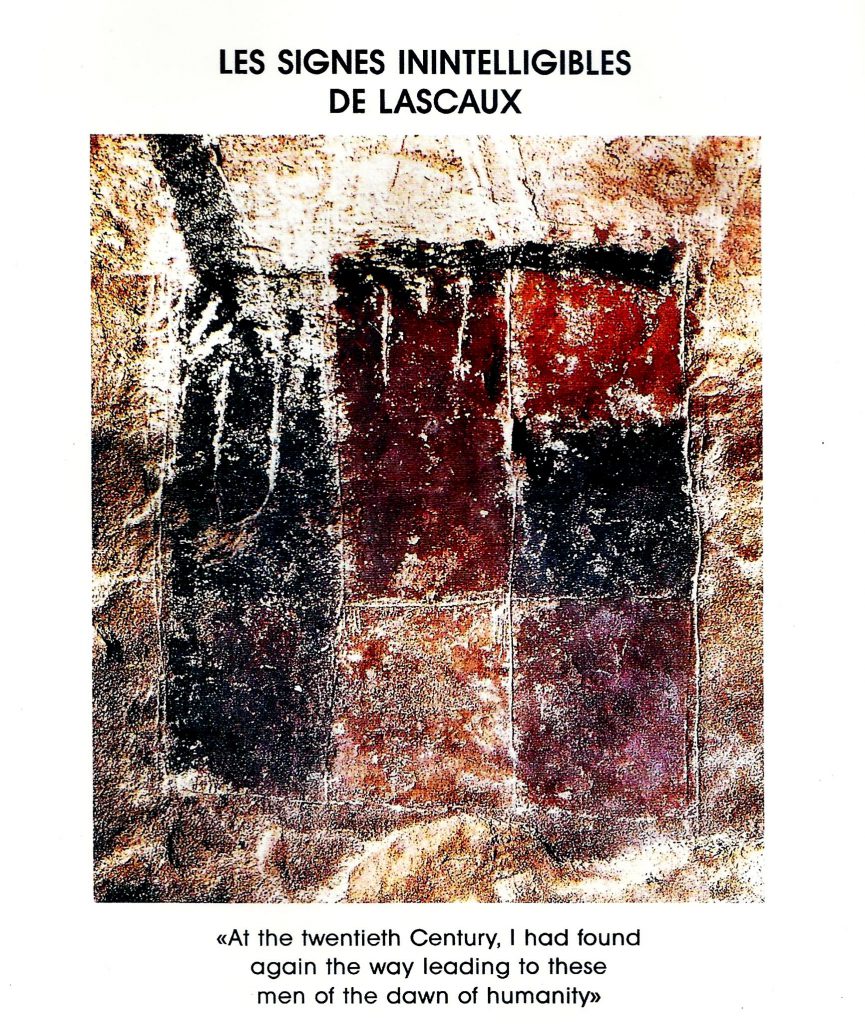
The laboratory of the Natural History Museum
Institute of Human Palaeontology
UA 184 of the national centre for scientific research
Paris – 22.04.1992
LASCAUX – LUCAS
On the mesmerising walls of Lascaux, the untamed strength of the aurochs seems to have been harnessed by the Magdalenian artist. The superb yet fearsome, agitated and lively animal crosses the pictorial space. Its black, multi-faceted, larger-than-life image captivates and impresses the eye. The smaller, more colourful deer and horses set amongst the tumultuous strength of the aurochs seem reassuring and peaceful yet nevertheless in motion.
Elsewhere, in the narrower, more secret cave, the artist has painted and carved other cattle – more aurochs, but this time more gracile, and bison.
Their tails swish back and forth, revealing their agitation. At the bottom of the well, a few metres below the decorated galleries, the Magdalenian artist has drawn in black the simultaneous death of man and the animal. In a final fit of rage, the bison, torn open by the assegai, is still trying to gore the hunter, with his bird-like head, and rams into him violently.
The black bull in the ring and Enlightened man perpetuate the duality of life and death through intimate gestures of spellbinding beauty with a transient, stabbing fluidity.
This is what LUCAS paints with tragic and magnificently moving depth. His emotion seems to echo that of the hunters of Lascaux. Through his art, he responds to them by portraying his own life risk, chosen by the bullfighter with the aid of the beast.
But now a red, diamond-shaped stain bloodies his work. Everything seemed intelligible and yet this sign puts a stop to immediate understanding. This geometric shape encapsulates the signature of life, that of the bull’s blood which the bullfighter symbolically deposits at Lucas’ invitation.
The imaginary bestiary of Lascaux is also home to signs, to simple or complex geometrical shapes that are never identifiable as things, objects or weapons. They are also symbols that are part of a myth whose words have been lost over time.
The signs at Lascaux and all the Magdalenian caves and the red quadrilaterals in the works of LUCAS merge into a single vision of man, animals and their meanings which cannot be interpreted by logic alone. Their works bring together the actors of life and thought, impulse and feelings. They invite the onlooker to put the finishing touches to them in their mind’s eye where meaning is given to what has been carefully hidden: the red, the stroke, the diamond shape, abstract coupled with representational geometry that serves as a metaphor for the living and yet continuously mortal relationship between Man and Animal.
Denis Vialou
Deputy Director of the Natural History Museum, Paris
LA PREHISTOIRE (L’univers des formes), Gallimard
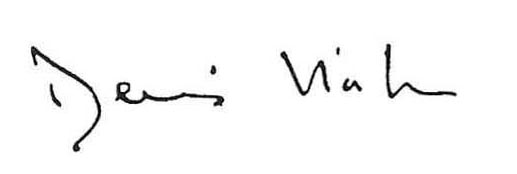
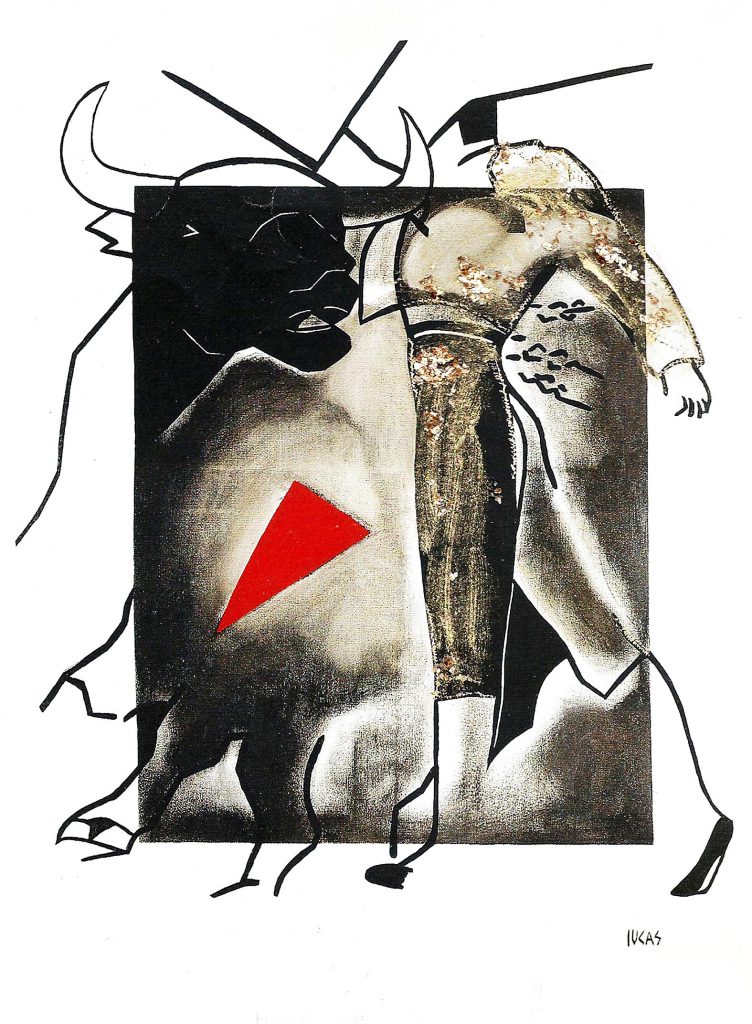
A study of the unintelligible signs of Lascaux 18,000 years ago,
resonating with the geometric figures painted with the bullfighters
Just over a year ago, I was browsing through a book on Lascaux and rock art one evening in my chapel. I came across a page to which I had never previously paid any attention. On it was an enlarged photograph depicting squares and rectangles painted in a single colour, followed by the unintelligible symbols of Lascaux. Many theories have been put forward in an attempt to interpret these symbols.
The Lascaux cave complex is the finest and most moving of the prehistoric caves. In the dim light, you are seized by an inexplicable feeling, as if humans from a time long gone were calling you. This impenetrable cave, which resonates with the silent procession of life, is a sanctuary for the souls of these far distant earth dwellers.
Although animals are portrayed in a naturalist way – and extraordinarily well at that – humankind also stands before our very eyes. The secret message they left us has not been heeded and yet, they are definitely there, in parts of the cave.
This unique message is inscribed in the so-called unintelligible symbols and above all, in these single-colour geometrical shapes. The most remarkable ones are located at the feet of the Great Black Cow in the Nave.
There is a striking discrepancy between the supernatural nature of this sanctuary and the simplistic theories put forward by man, as if he had lost the ability to comprehend the supernatural in all its blinding simplicity.
These squares and rectangles, painted in a single colour in the caves of Lascaux are essentially the same as the squares and rectangles of this ‘project’ which, for over four years now, has stolen my time, my heart and my soul.
This profound communion between the artist, Lucas, and the bullfighters echoes like an ancient response to these men of Lascaux who, several thousand years ago, left us a secret message etched onto the rock itself. The men who painted some of the oldest animal frescoes at Lascaux using the same geometrical shapes wrote the story of their lives in a secret language.
In the 20th century, I had rediscovered the path that would take me back to these men from the dawn of time through one man, the bullfighter.
Lucas

